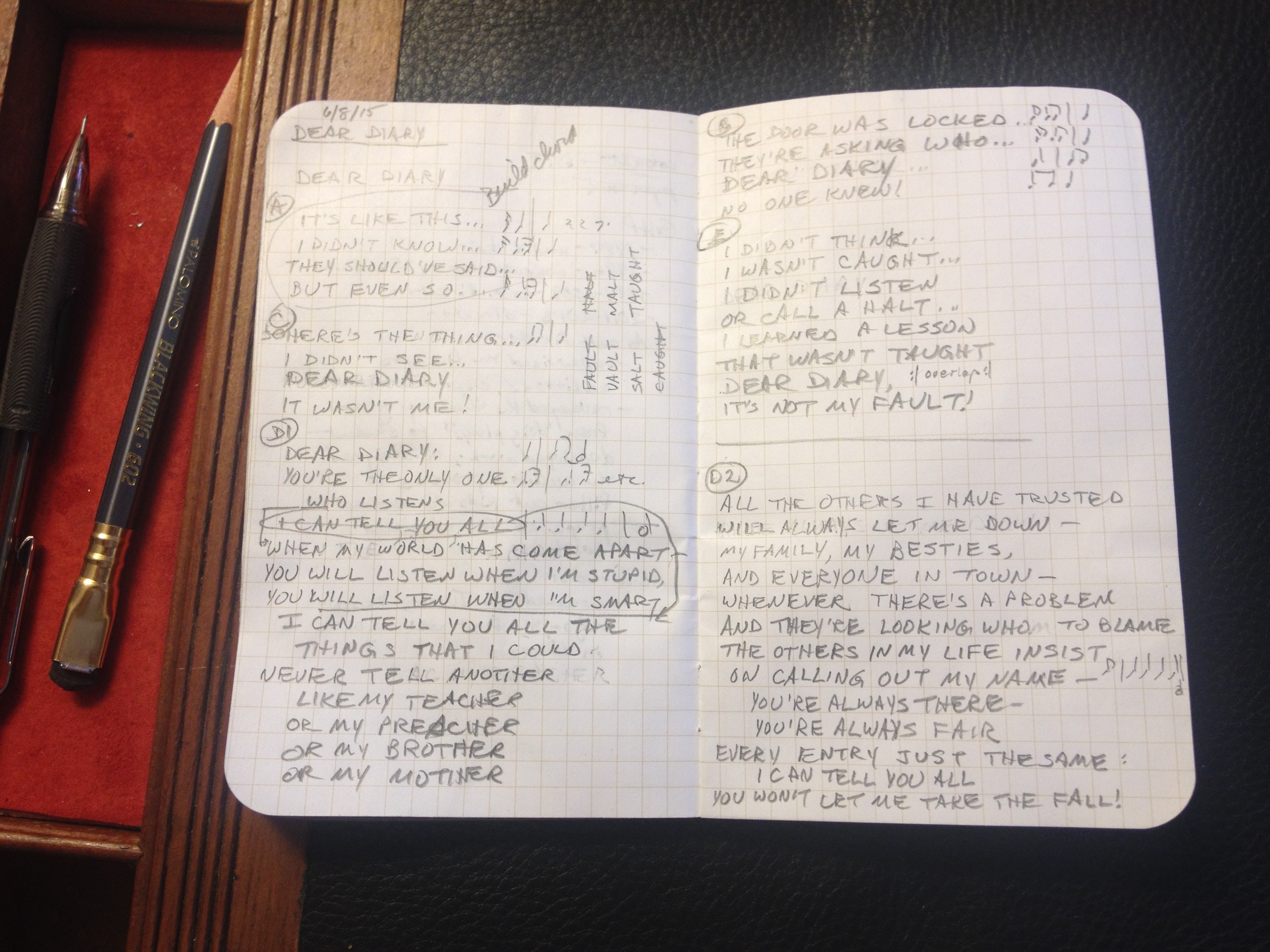Last summer I was asked to teach a middle school theatre workshop at Newnan Theatre Company. The topic was character development, and its theme was “Villains.” I don’t know what I was expected to do, but what I did was lead the kids through developing and writing their own villain monologues and scenes, which they performed before adoring relatives at the end of the week.
One of the really cool things that happened was that I came home from a meeting about the workshop and was inspired to write an opening number, “Not Really Bad,” which was a hit: the kids loved doing it and the audience went wild.
And so this summer, the workshop’s theme is “Diary of a Wimpy Kid.” We’re going to work on the concept of the unreliable narrator: in the books, the main character Greg tells his diary more or less what happens, but the reader sees that Greg is the main cause of all the troubles he gets into—and then others are punished for it! Greg never shows the slightest remorse or even self-knowledge—that’s what we’re going to work on.
Of course I thought right away of writing another opening number, “My Diary,” and so yesterday I pulled out one of my trusty Field Notes notebooks and got to work.

I finished all but the D2 block yesterday and just ran out of brain. But it all came together smoothly today.
Here’s what I wanted to talk about:
As I worked, I became aware that my brain was thinking along many pathways simultaneously, juggling as each came to the forefront of the problem-solving process. For instance, I kept in mind that I’m writing for middle school voices and that the piece has to be learned in four days—and that everyone needs a share in the proceedings. So I was structuring it so that it’s a collection of solo lines all contributing to the same idea, and the words flow smoothly and cleanly. The eventual melody will be catchy and simple.
I also kept in mind that I’m trying to get across to the audience the theme of the performance: the characters they will be seeing are not to be trusted in their narratives.
Rhythms were constantly in my mind, mostly because the verse is severely metrical. You’ll notice that I’ve notated some in the margins so I don’t forget the barely perceptible finished product that was floating in my mind when I wrote the words.
I also found myself playing with structural elements, starting with the “Dear Diary” refrain that recurs, plus sections of the singers repeating and overlapping “Dear Diary” at junctures in the piece. There’s the opening (A), a steady sequence of phrases the last notes of which the singers will hold to build a chord—which then launches into an allegro ditty (B & C) in which our cast members step up and have their moment in the spotlight. We then get the patter song middle part (D1 & D2), a love song to the Diary and how much it means to the singer to have one friend who will never let him down.
Here’s a thing: right off the bat in the writing of D1, you’ll see the phrase “I can tell you all,” and I’ve notated a non-patter rhythm next to it. I finished more of the verse, knowing that the break needed to come later. In fact, while the photo shows it ending up after the first quatrain, it will actually go at the end of the second, after “…or my mother!”
So that element, the “I can tell you all” break, became a signpost for me as I tackled (D2), i.e., I needed two more quatrains, continuing to develop the self-serving nature of the narrator, yet building up to a phrase to rhyme with “I can tell you all.” What this resulted in was breaking the patter rhythm for the end of the verse (“…calling out my name”) and leading to a secondary break which leads our focus back to the Diary, another -ame rhyme, and then the boffo repeat of the break and the rhyming phrase.
I will probably go back to the overlapping “Dear Diary” idea, and then lead us back to the chipper, chirping opening phrase (E)—oh yeah, I’m all about that da capo—which itself loops back through the layered “Dear Diary” motif to end with a big finish, “It’s not my fault!”
All of these things were circling in my head as I mapped out possible rhymes (you can see a list of -ault/aught rhymes in the margin) and forged ahead.
You can see some erasures on the page. Most were revisions of meter and rhyme, but a couple were structural: the “Dear Diary” motif in (B, C & E) for example, replaced a simple iambic dimeter phrase—which then got shoved out to star in its own quatrain.
All in all, the thing grew organically on its own, practically, almost as smoothly and efficiently as “Not Really Bad” did last year. No, I don’t have any real melody waiting in the wings here; it’s all I can do to keep from stealing “The Reckoning” from Dirty Rotten Scoundrels.